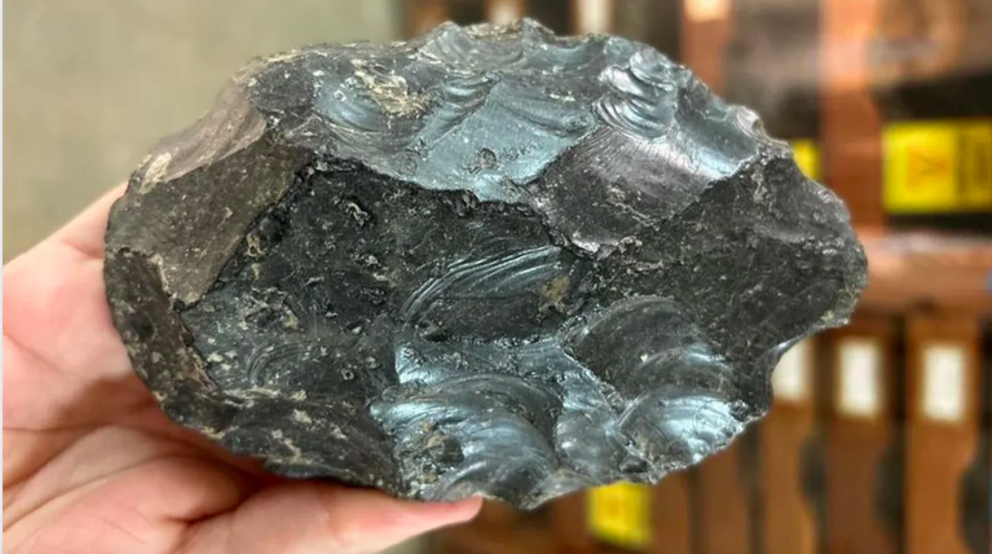1.2-million-year-old obsidian axe factory found in Ethiopia
An unknown species of human apparently mastered obsidian, something it had been thought only occurred in the Stone Age.
 An obsidian handaxe, made by an unknown hominid 1.2 million years ago. Image credit: Margherita Mussi
An obsidian handaxe, made by an unknown hominid 1.2 million years ago. Image credit: Margherita Mussi
Forged in magma and capable of producing the sharpest blades on Earth, obsidian is without a doubt one of the most badass materials ever imagined (there's a reason George RR Martin made it the weapon of choice to kill White Walkers). The jet-black volcanic glass is also extremely delicate and dangerous to work with, and was not mastered by humans until the latter part of the Stone Age… or so we thought.
Reporting on the latest findings from the Melka Kunture archaeological site in Ethiopia, a team of researchers has described the discovery of an obsidian handaxe workshop within a layer of sediment dated to 1.2 million years ago. This represents a staggeringly early example of obsidian shaping, and, according to the study authors, is the only handaxe factory ever dated to the Early Pleistocene.
“[Archaeological] sites described as ‘knapping workshops’ are only recorded in the second half of the Middle Pleistocene and only in Europe so far,” write the researchers. Located predominantly in France and the UK, the most notable Stone Age axe workshops were all associated with the creation of flint blades.
“Generally speaking, obsidian is extensively used only from the Middle Stone Age onwards,” write the study authors.
However, during the course of their excavations, the team came across an ancient layer of sediment containing a cache of 578 stone tools, all but three of which were sculpted from obsidian. “We show through statistical analysis that this was a focused activity, that very standardized handaxes were produced and that this was a stone-tool workshop,” they write.
Describing the axes, the researchers repeatedly marvel that “the morphological standardization is remarkable,” and while they don’t know which species of human crafted the tools, they say that whoever created them diligently applied “secondary retouches” and was highly “focused on the final regularization of the artifacts.”
Achieving such homogeneity would have required highly sharpened skills and a fair amount of dexterity, as obsidian is a fragile rock that must be knapped with considerably more finesse than flint or basalt. “Accordingly, manufacturers had to accurately evaluate the strength of the blow to avoid producing flakes of little use, or just to avoid smashing the core,” explain the researchers.
Techniques for shaping obsidian are believed to have first emerged during the Upper Paleolithic, and even modern knappers wear protective gloves to avoid shredding their hands when working with the razor-sharp material. And yet, when describing tools from over a million years ago, the study authors say that “the standardized obsidian handaxes provide ample evidence of the repetitive use of fully mastered skills.”
The emergence of such abilities marks a surprisingly massive cognitive leap for such an ancient group of humans. According to the authors, the adaptation of existing flint knapping techniques to create more challenging obsidian tools can be seen as an example of “convergent thinking”, which is associated with creative problem-solving.
Hailing this remarkable achievement, the researchers say the old axe makers “creatively solved through convergent thinking technological problems such as effectively detaching and shaping large flakes of the unusually brittle and cutting volcanic glass.”
All without any protective gloves. Over a million years ago.
The study is published in the journal Nature Ecology & Evolution.
